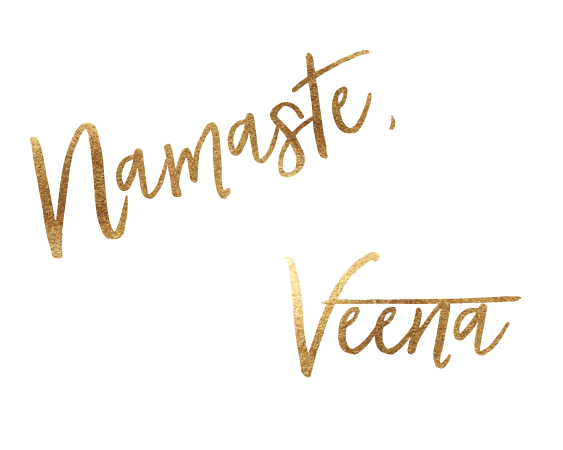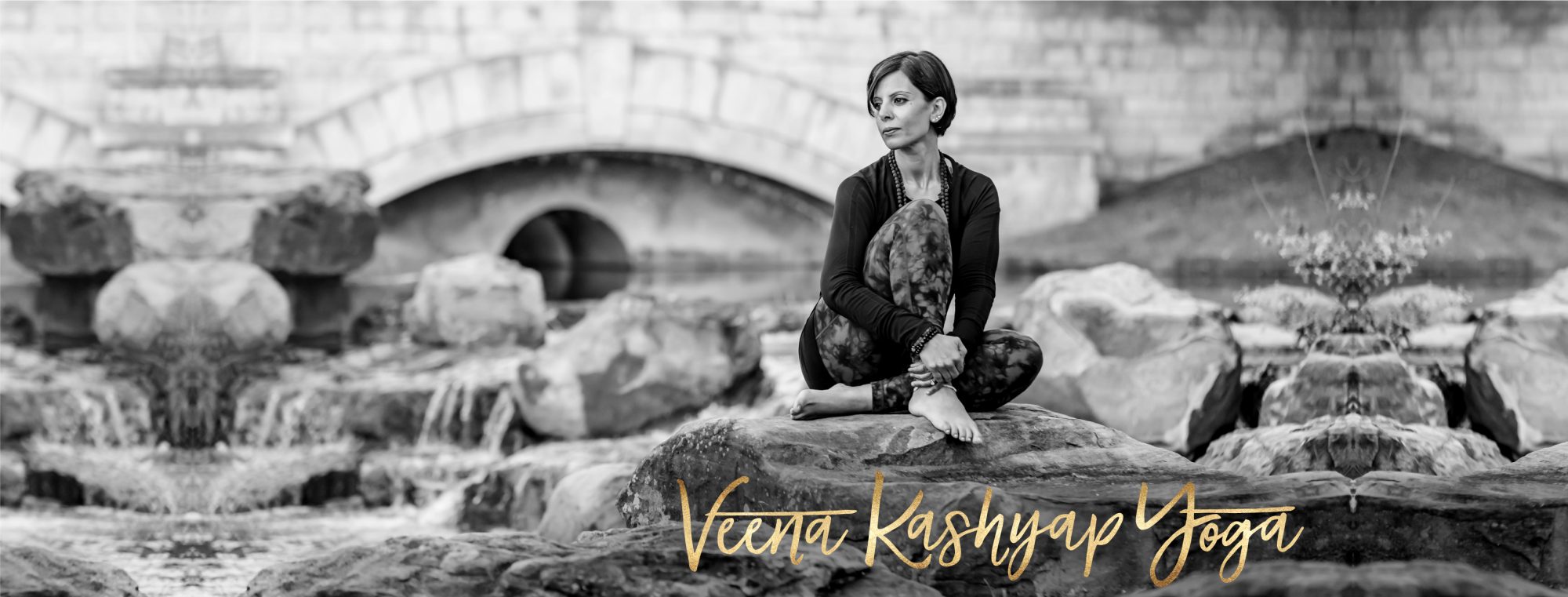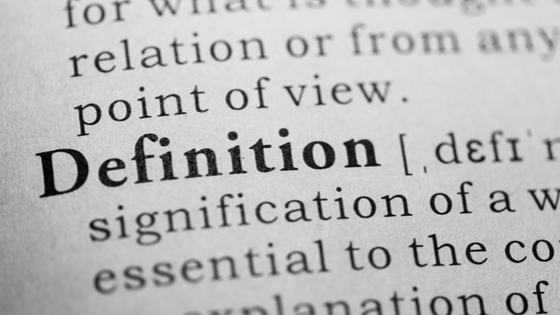If I had one wish during my two-hundred hour yoga teacher training, it was to have an easy to use list of yoga terms and their meaning. So I present to you the essential yoga dictionary. This yoga dictionary includes terms you might come across in during a yoga class, teacher training or even your own svadhyaya (self-study.)
This yoga dictionary is a work in progress and I’ll continue to append to the list but for now, I hope to have covered some of the essentials for you. Please bookmark this essential yoga dictionary for future reference and send me comments on how to make this guide more comprehensive for your needs.
A
- Abhinivesha – fear of death and one of the five kleshas
- Acharya – scholar, spiritual teacher
- Agni – fire; an element or tattva of nature
- Ahimsa – non-violence; one of the traits of Yama (the first limb of the eight limbs of yoga)
- Ajna – third eye chakra; the sixth chakra
- Akasha – ether or space; an element or tattva of nature
- Anahata – heart chakra; the fourth charka joins the first three chakras (matter) with the last three chakras (spirit)
- Ananda – bliss, joy or happiness
- Aparigraha – non-possessiveness; one of the traits of Yama (the first limb of the eight limbs of yoga)
- Arjuna – one of two central figures in the Bhagavad Gita
- Arti – religious ritual of puja or prayer
- Asana – yoga posture
- Ashram – spiritual hermitage; monastery
- Ashtanga – eight limbs or path as described in Patanjali’s Yoga Sutras; the yoga of mind cultivation; also known as Raja yoga
- Ashtanga (vinyasa) yoga – vigorous hatha yoga practice created by teacher Patabhi Jois; Krishnamacharya lineage; Ashtanga yoga focuses on the alignment of posture, breath and bandha; the practice consists of six series
- Asmita – ego and one of the five kleshas
- Asteya – non-stealing; one of the traits of Yama (the first limb of the eight limbs of yoga)
- Atman – the universal or eternal Self or soul
- Aum – (see Om) the collective sound of the universe
- Avatar – divine descent of Hindu God on earth
- Avidya – ignorance and one of the five kleshas
- Ayurveda – the Indian science of holistic medicine
B
- Bandha – lock
- Bhagwan – God
- Bhagavad Gita – “The Song of the Lord” consists of eighteen chapters and over 700 verses, outlining the three branches of yoga (Karma, Bhakti, Jnana and Raja) to lead the practitioner to attain liberation or moksha from the endless cycles of birth-rebirth; central figures of the Bhagavad Gita are Lord Krishna and the prince warrior Arjuna; part of the epic Mahabharata
- Bhajan – singing God’s praises
- Bhakti – devotion or love for God
- Bjia – seed
- Bija mantra – a one word seed mantra
- B. K. S. Iyengar – creator of the Iyengar style of yoga; student of Krishnamacharya
- Brahma – Lord of creation; part of the holy trinity of Hindu gods including Vishnu and Shiva
- Brahmacharya – moderation of the senses; one of the traits of Yama (the first limb of the eight limbs of yoga)
- Brahman – the universal Self or the highest form of reality
- Buddhi – intellect
C
- Chakra – wheel; the spiritual energy center of the body
- Chitta nirodha – control of the mind; yogas chitti vritti nirodha
D
- Devi – the Divine Mother; goddess
- Dharana – concentration of the mind; the sixth limb of the eight limbs of yoga
- Dharma – inherent duty
- Dhyana – meditation; the seventh limb of the eight limbs of yoga
- Drishti – concentration of sight
- Dukha – misery
- Dvesha – aversion and one of the five kleshas
E
- Eight limbs of yoga – Composed by Patanjali and found in chapters or padas two (Sadhana) and three (Vibhuti) of the Yoga Sutras; details the path to samadhi or liberated consciousness
G
- Ganapati – the elder son of Shiva; the remover of obstacles; also known as Ganesh
- Ganesh (see Ganapti)
- Gayatri mantra – a mantra recited for wisdom and enlightenment
- Gita – song
- Guna (s) – tendency of human nature; three fundamental tendencies include Tamasic, Rajasic and Sattvic
- Guru – a spiritual teacher who imparts both literal and experiential knowledge to students
H
- Hanuman – Hindu demi-god depicted as a Monkey; Lord Rama devotee; central figure of the epic Ramayana
- Hatha yoga – practice of physical yoga postures
- Hinduism – the world’s third largest religion originating in the sub-continent of India; considered by many scholars to be the oldest religion dating back over 4000 years; Hinduism can be described as henotheistic—the worship of one particular god without disbelieving in the existence of others; the Vedas are considered the most revered of Hindu scriptures; the core concept of Hinduism can be broken down into four key principles: Dharma – virtuous behavior and fulfilling one’s duty in life; Artha – pursuing material prosperity; Kama – pursuing pleasure in all its forms and Moksha – the liberation from the attachments caused by dependence on the material world and from the cycle of birth and rebirth; the path to moksha can be attained thru the singular or simultaneous practice of karma, bhakti, jnana and raja yoga
- Hindu – a practitioner of Hinduism
I
- Iyengar yoga – hatha yoga practice created by teacher B. K. S. Iyengar; Krishnamacharya lineage; the focus of this practice is
- Isvara / Ishvara – God
- Ishvara pranidhana – surrendering to a higher source; one of the traits of Niyama (the second limb of the eight limbs of yoga)
J
- Janma – birth
- Japa – repetition of mantra, word, sacred syllable or God’s name
- Jivanmukti – liberation while alive
- Jnana – knowledge of the Divine; Self-realization; enlightenment
K
- Kailash – Lord Shiva’s home in the Himalayas
- Kali yuga – the last of the four ages of the world
- Karma – action; result of action
- Karma yoga – the yoga of action
- Kirtan – the singing of mantras; a part of Bhakti yoga
- Klesha – poison (of the mind); Patanjali identifies five kleshas in the Yoga Sutras: avidya = ignorance; asmita = ego; raga = attachment; dvesha = aversion; abhinivesha = fear of death
- Krishna – one of two central figures of the Bhagavad Gita; avatar of God or the complete manifestation of God
- Krishnamacharya – considered to be the “father” of modern day yoga; Pattabhi Jois, B.K.S. Iyengar and Indra Devi were students of Krishnamacharya
- Kriya yoga – path to attain enlightenment thru Tapas, Svadhyaya, and Ishwara Pranidhana (based on Patanjali’s Yoga Sutras 2.1)
- Kundalini – spiritual energy or life force located at the base of the spine.
M
- Mahabharata – “The Great Epic of Bharata” is one of two ancient Indian epics (the other being the Ramayana) and written in Sanskrit details the great battle at Kurukshetra between the Pandavas and Kauravas for the kingdom of Hastinapura; The Bhagavad Gita is part of the Mahabharata; Vyasa is the author of the Mahabharata
- Maharishi – great sage
- Mahatma – Sanskrit breakdown of “maha” means great and “atma” means soul;
- Manipura – solar plexus chakra; the third chakra residing directly above the navel; the prime function of the manipura chakra is energy and vitality including will power, desire and self control; a matter chakra associated with fire
- Mantra – syllable, word or statement used to enter into meditation
- Mantra japa – the repetition of a mantra
- Maya – the illusion the shrouds our ability to see the ultimate reality or Brahman
- Meditation – discipline of the unruly mind by turning away attention from the external world to finding internal stillness while being fully conscious
- Moksha – the liberation from the attachments caused by dependence on the material world and from the cycle of birth and rebirth; the path to moksha can be attained thru the singular or simultaneous practice of karma, bhakti, jnana and raja yoga
- Mudra – sacred gesture; most commonly used gestures are with the fingers and hands for meditation or during asana practice; examples of mudras include anjali, gyana and dhyana
- Muladhara – root chakra; the first chakra residing at the base of the spine; the prime function of the muladhara chakra is grounding, security and survival; a matter chakra associated with earth
- Muni – sage
- Murti – idol
N
- Nadi (s) – channels through which energy (prana) flows in the body
- Namaskar – an Indian greeting of respect where the greeter normally joins their palms together (anjali mudra)
- Namaste – an Indian greeting which represents all are one; in Sanskrit “namas” means bow and “te” means you
- Nirvana – liberation; the idea that we are no longer bound by maya or ego
- Niyama – the second limb of the eight limbs of yoga found in Patanjali’s Yoga Sutras; moral and ethical standards of self-discipline including Shaucha – self-purification, Santosha – contentment, Tapas – self-discipline, Svadhyaya – self-study and Ishvara Pranidhana – surrendering to a higher source
O
- Om – (see Aum) the collective sound of the universe
P
- Pandit – Hindu priest
- Patabhi Jois – creator of the Ashtanga Vinyasa style of yoga; student of Krishnamacharya
- Patanjali – author of the Yoga Sutras
- Prana – life force or energy
- Pranayama – the lengthening of the breath; the fourth limb of the eight limbs of yoga
- Prasad – offering as part of puja
- Pratyahara – the withdrawal of the senses; the fifth limb of the eight limbs of yoga
- Prithvi – earth; an element or tattva of nature
- Puja – the act of worship
R
- Raga – attachment and one of the five kleshas
- Raja yoga – also known as Ashtanga yoga and means “royal” yoga; cultivation of the mind through meditation; Patanjali created the eight limbs of yoga which provide the path of raja yoga; Hatha yoga is a part of Raja yoga.
- Rajas – tendency of human nature; one of the three Gunas; Sanskrit meaning “passion;” the movement of opposing forces and the quality of action towards a goal; a core concept in Ayurveda
- Rajasic – see Rajas
- Ramayana – “Ramas Journey” is one of two ancient Indian epics (including the Mahabharata) details Lord Rama’s exile and return to his kingdom of Ayodha; composed by the poet Valmiki
- Rishi – a seer or sage
- Rudra – The Lord Shiva in his avatar as destroyer
S
- Sadhana – path of spiritual practice
- Sada Shiva – The Lord Shiva in his avatar as eternal goodness
- Sahasrara – crown chakra; the seventh chakra residing at the top of the crown or head; the prime function of the sahasrara chakra is enlightenment or transcendence; a spirit chakra
- Samadhi – the last of the eight limbs of yoga found in Patanjali’s Yoga Sutras; the realization of the higher Self and God; the end state of the cumulative effort of the the first seven limbs
- Samsara – the process of birth, death and re-birth
- Samskara – impressions created by previous actions or thought
- Samkhya – can be spelled as Sankhya; one of the six schools of Indian philosophy; dualistic point of view and the key concept includes the idea of Purusha (matter) and Prakriti (eternal spirit)
- Sankhya – see Samkhya
- Santosha – contentment; one of the traits of Niyama (the second limb of the eight limbs of yoga)
- Satsang – sacred gathering; spiritual discourse
- Sattva – tendency of human nature; one of the three Gunas; Sanskrit meaning “purity;” a core concept in Ayurveda
- Sattvic – see Sattva
- Satya – truthfulness; one of the traits of Yama (the first limb of the eight limbs of yoga)
- Shakti (Sakti) – strength, power and energy; represents the female; responsible for creation and change from the pure consciousness (Shiva); the balance of Shiva; Shakti is often in the form of and called upon to: fight our own personal demons or when seeking protection and associated with Goddess Durga; for fertility or identification with the mother goddess archetype and associated with goddess Parvati and the consort of Shiva; to destroy evil and restore balance and associated with goddess Kali.
- Shankracharya – a term associated with the head of Advaita Vedanta monasteries known as mathas; Adi Shankracharya consolidated the Advaita Vedanta, a school of Indian philosophy conceptualizing that Atman and Brahman are in unity and not separate from one another
- Shaucha – self-purification; one of the traits of Niyama (the second limb of the eight limbs of yoga)
- Shiva (Siva) – Lord Destroyer (of evil); part of the holy trinity of Hindu gods including Brahma and Vishnu
- Siddhi – Sanskrit meaning “attainment;” supernatural power attained through spiritual advancement of sadhana
- Slokha – a couplet consisting of two lines of 16 syllables each
- Sohum (Soham) – a mantra meaning “I am That;” the identification of the Self with the universe
- Sutra – Sanskrit meaning “string;” aphorism
- Surya Namaskar – Sanskrit meaning “Sun Salutation;” a practice consisting of twelve postures coupled with breath creating a pranic flow of energy; each posture is associated with a mantra and offered as a prayer to the Sun
- Svadhisthana – sacral chakra; the second chakra residing below the navel; the prime function of the svashisthana chakra is relationships, emotions and sexuality; a matter chakra associated with water
- Svadhyaya – self-study; one of the traits of Niyama (the second limb of the eight limbs of yoga)
- Swami – Sanskrit meaning “one with self;” Hindu ascetic or spiritual teacher initiated into a religious monastic order
T
- Tamas – tendency of human nature; one of the three Gunas; Sanskrit meaning “ignorance;” a core concept in Ayurveda
- Tamasic – see Tamas
- Tapas – self-discipline; one of the traits of Niyama (the second limb of the eight limbs of yoga)
- Tattva – Sanskrit meaning “truth”
U
- Ujjayi – the victorious breath; a style of pranayama used in Ashtanga vinyasa yoga to lengthen the breath
- Upanishads – Sanskrit definition “sitting at the feet” and are contained within the Vedas; the core concepts include Samsara, Karma, Dharma, Moksha and Atman; the Bhagavad Gita is said to be the summary of the Upanishads
V
- Veda – knowledge
- Vedanta – one of the six schools of Indian philosophy; “veda” means knowledge and “anta” means end and therefore, Vedanta means the end or culmination of the knowledge; Vedanta inherits its roots from the Vedas and in particular, the Upanishads; it is a non-dualistic philosophy and the basic premise is that our true reality lies goes beyond one’s own limited intellect and the manifest world (maya)
- Vedas – considered to be the oldest surviving spiritual texts of Hinduism; structured in four different collections (Rig, Sama, Yajur and Athara) containing hymns, poems, prayers, and religious instruction; each Veda is broken down into four sections: Samhitas, Aranyakas, Upanishads and Brahmanas; the great sage Vyasa is said to have compiled the Vedas; considered to
- Veena – beloved string instrument of Lord Shiva
- Vidya – knowledge
- Vishnu – Lord Preserver; part of the holy trinity of Hindu gods including Brahma and Shiva
- Vishuddha – the fifth chakra – throat chakra; the first of the spirit chakras
- Vyasa – also known as Krishna Dvaipāyana, is the author of the Mahabharata, the Puranas, the Yoga Bhashya – a commentary on the Yoga Sutras and composed the Brahma Sutras; Vyasa is said to be the compiler of the Vedas
Y
- Yama – the first of the eight limbs of yoga found in Patanjali’s Yoga Sutras; moral and ethical standards of self-restraint including Ahimsa – non-violence, Satya – truthfulness, Asteya – non-stealing, Brahmacharya – moderation of the senses and Aparigraha – non-coveting
- Yoga – “union” with the Self and God
- Yoga Sutras – 196 aphorisms broken into four chapters or padas (Samadhi, Sadhana, Vibhuti and Kaivalya) detailing the path of yoga as written by Patanjali; the Sutras are considered a manual more than doctrine providing yoga students with the groundwork (ethical principles, movement, breathing and meditation) to enter the state of samadhi or liberated consciousness; the eight limbs of yoga are detailed in the Sutras; the Sutras are associated with raja yoga
- Yogi – follower of the path of yoga (male)
- Yogini – follower of the path of yoga (female)



